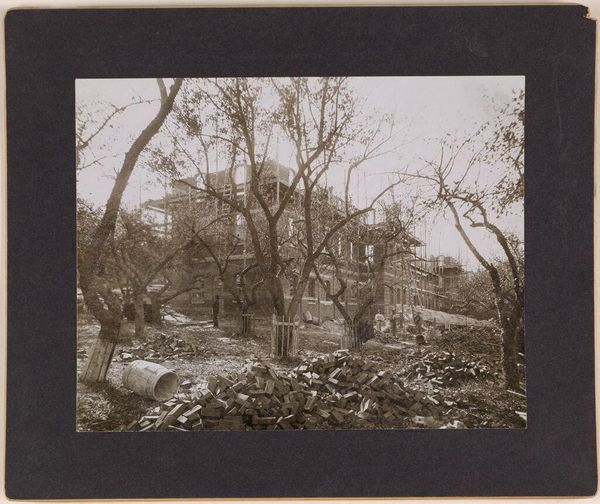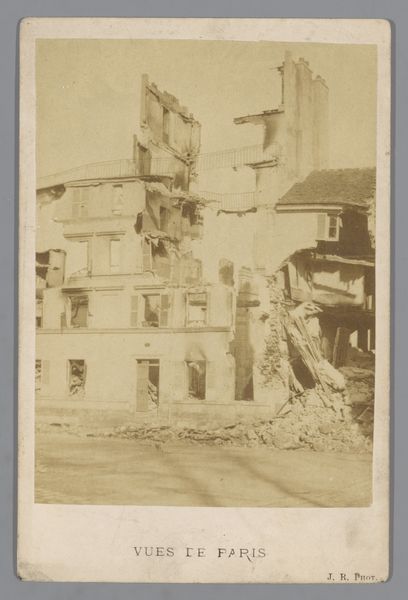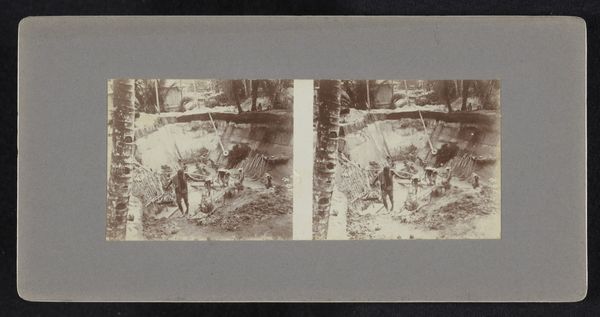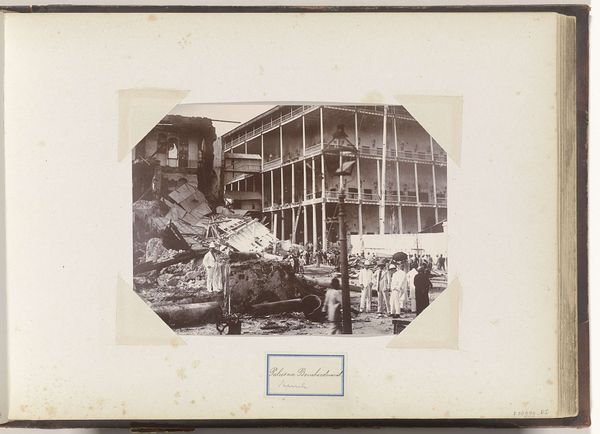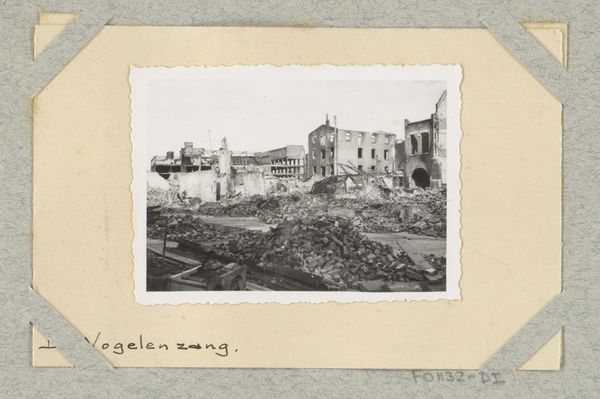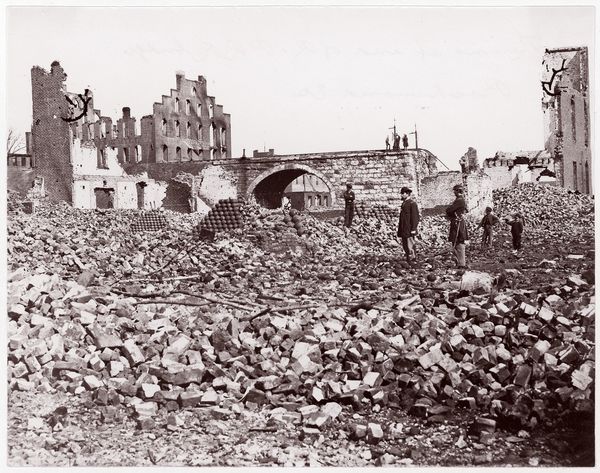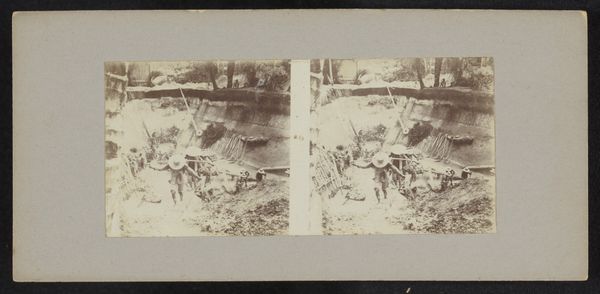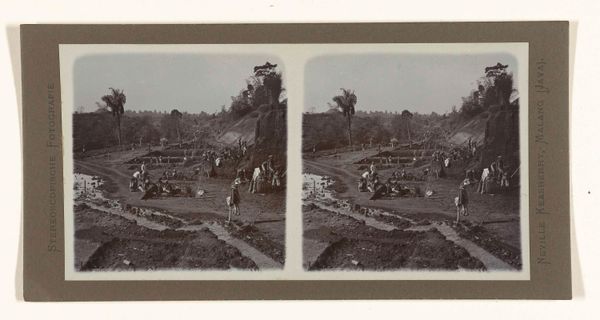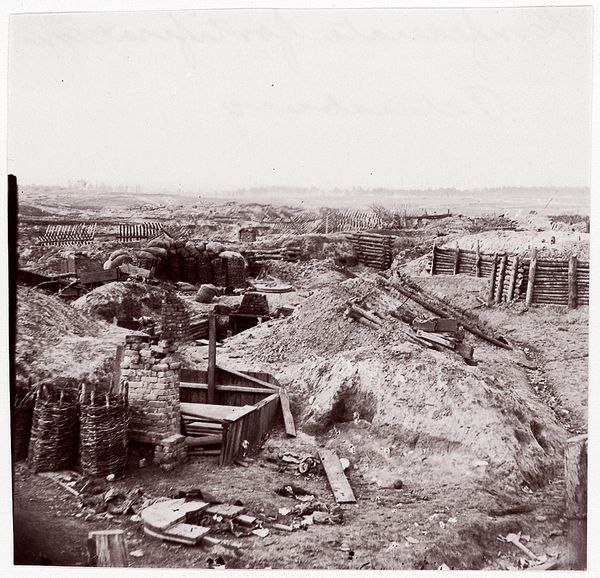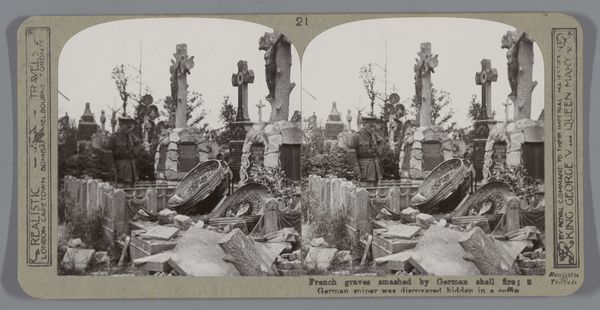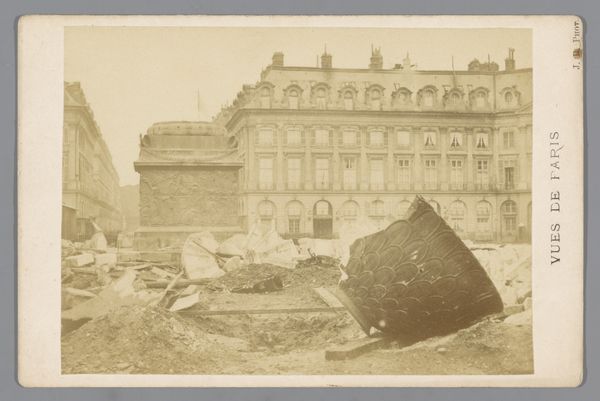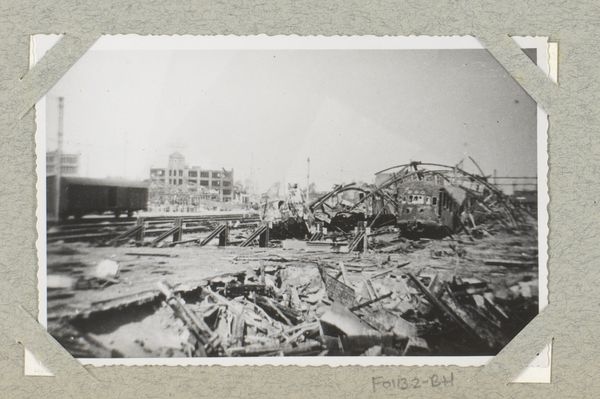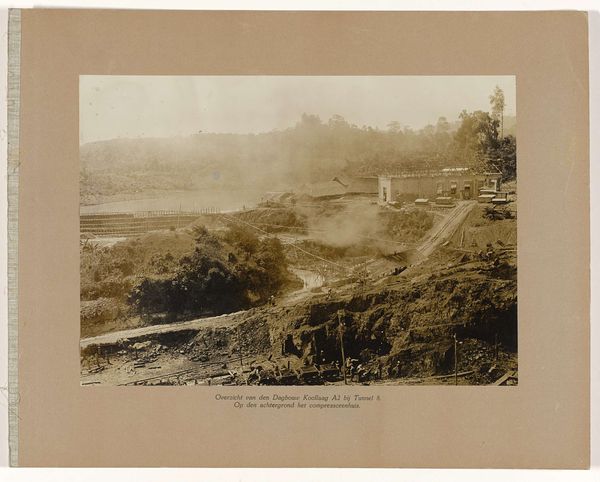
print, photography
# print
#
landscape
#
photography
#
constructionism
#
realism
Dimensions: height 228 mm, width 295 mm, height 296 mm, width 355 mm
Copyright: Rijks Museum: Open Domain
Curator: I’d like to draw your attention to an arresting black and white photograph, taken between 1913 and 1918 by Blitz en Zn. It’s titled "Sloop van ruïnes (van een bolwerk of Vredenburg) in Utrecht," which translates to “Demolition of ruins (of a bulwark or Vredenburg) in Utrecht.” Editor: What immediately strikes me is the tactile sense of the scene. Look at that mound of rubble and debris! It conveys the laborious, gritty process of destruction. It almost feels as though the weight of the dismantled fort is tangible. Curator: Indeed. Blitz en Zn.’s piece captures an interesting moment in architectural transition. The use of photography as a medium is noteworthy, emphasizing the materiality of urban change. Note the workers, seemingly dwarfed by the mass they are dismantling. It underscores a particular mode of production, one of manual, hard labor. Editor: Absolutely, the photographic medium allows for such direct observation. Consider also how the building behind this laborious scene remains almost untouched; it emphasizes how social life continues on regardless of constant creation and demolition. These men become part of that wider construction. What statement do you think the artists might be making? Curator: It’s a nuanced portrayal, undoubtedly. We are dealing with an early Realist-tinged Constructivism, which creates interesting tension. They seem less concerned with aesthetic romanticism than with a pragmatic representation of modernity's restructuring. The geometrical rigour underpinning architectural planning stands juxtaposed with its antithesis: collapse, decay. Editor: Perhaps. I would propose that we do, as well, read this beyond a depiction of construction and destruction as it portrays something fundamental regarding these men, their society and history. What do you mean with geometrical rigor? Curator: Observe how the frame captures geometric shapes -- rectangular, linear. These geometrical components create structured tension, revealing Blitz en Zn's commentary on utopian and dystopian aspects inherent within societal reorganization during modernization. Editor: I see. From my side, I would add that what seems like a mundane scene really highlights the dynamic forces—social, material, and historical—at play in early 20th-century Netherlands. A real insight of this kind really offers valuable perspective into lives. Curator: Precisely. The piece certainly rewards considered reflection, offering, through seemingly direct realism, layers upon layers. Editor: Absolutely. Its gritty honesty challenges conventional modes representation; as opposed to merely observing art we become acutely cognizant not simply concerning it, as you have indicated.
Comments
No comments
Be the first to comment and join the conversation on the ultimate creative platform.
